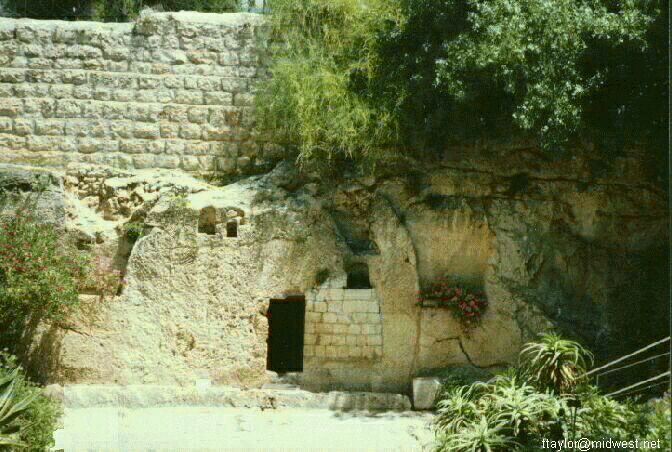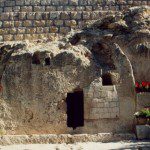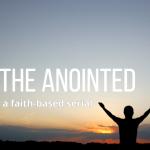Last week I made the point that to Paul the cross and resurrection of Jesus are so closely entwined that he will often use one or the other of them as shorthand for both. Today I want to point to another passage, this time in Peter, where I believe the same thing occurs.
“He himself bore our sins in his body on the tree, that we might die to sin and live to righteousness. By his wounds you have been healed.” (1 Peter 2:24)
 Notice first of all that this is a strong verse in support of a penal substitutionary view of the atonement. Jesus is hanging there on the cross bearing our sins. Now what is happening to our sins? Our sins are being destroyed, that’s what! Our sins are in the body of Christ and are being destroyed. How are they being destroyed? For a start, it’s on a tree, and as any reader of Galatians 3:13 knows, anyone hung on a tree is cursed. As Paul puts it “Christ redeemed us from the curse of the law by becoming a curse for us—for it is written, ‘Cursed is everyone who is hanged on a tree.’”
Notice first of all that this is a strong verse in support of a penal substitutionary view of the atonement. Jesus is hanging there on the cross bearing our sins. Now what is happening to our sins? Our sins are being destroyed, that’s what! Our sins are in the body of Christ and are being destroyed. How are they being destroyed? For a start, it’s on a tree, and as any reader of Galatians 3:13 knows, anyone hung on a tree is cursed. As Paul puts it “Christ redeemed us from the curse of the law by becoming a curse for us—for it is written, ‘Cursed is everyone who is hanged on a tree.’”
What destroys sin? The fact that it is punished and annihilated at the cross. What else can “By his wounds you have been healed” mean in this context? So a real transfer has occurred where the wounds of Christ deal with our sin. This is another of those verses that, to me, seem hard to read any other way, although my commentators are welcome to try!
Today is Resurrection Sunday, after all, so notice the middle portion of those words. You should notice a parallel with the words we were considering last week. We are told that what happened to Jesus is so that we can die to sin — that makes sense, of course, but also the words “live to righteousness” are added. I would argue that to this writer, the resurrection and the cross are so entwined that he sees no need to mention it here, it is assumed. The parallelism between Jesus’ death and our death to sin and His resurrection and our righteous life is so strong it must be a very early summary of the Gospel. To go back to what I said a few weeks back, it is sad that we often fail to even mention the Resurrection in our preaching of the Gospel.
How do I know for sure that Peter used this abbreviation — not because the resurrection was unimportant to him theologically — but because of his belief that he could trust his readers to understand what he meant? It’s because in the previous chapter he does it the other way and speaks about the resurrection itself as having saved us without any mention of the cross!
Blessed be the God and Father of our Lord Jesus Christ! According to his great mercy, he has caused us to be born again to a living hope through the resurrection of Jesus Christ from the dead, 4 to an inheritance that is imperishable, undefiled, and unfading, kept in heaven for you, 5 who by God’s power are being guarded through faith for a salvation ready to be revealed in the last time. 6 In this you rejoice, though now for a little while, if necessary, you have been grieved by various trials, 7 so that the tested genuineness of your faith—more precious than gold that perishes though it is tested by fire—may be found to result in praise and glory and honor at the revelation of Jesus Christ. 8 Though you have not seen him, you love him. Though you do not now see him, you believe in him and rejoice with joy that is inexpressible and filled with glory, 9 obtaining the outcome of your faith, the salvation of your souls. (1 Peter 1:3-9)














